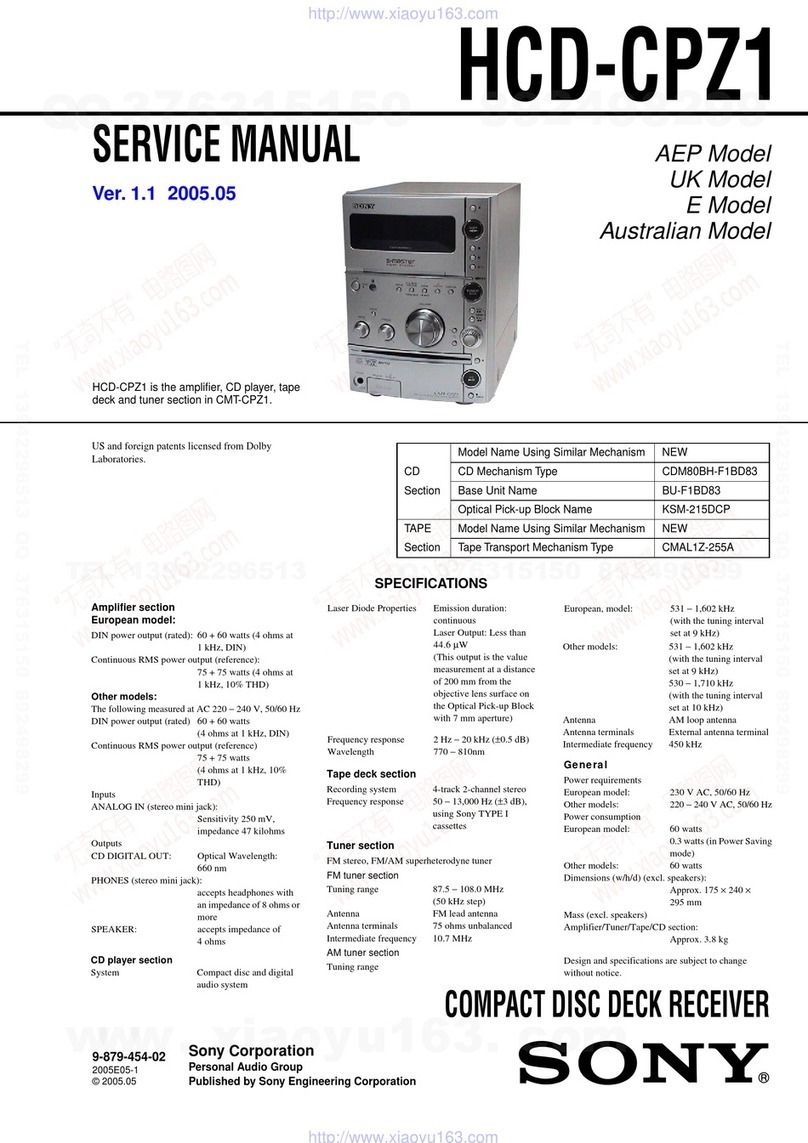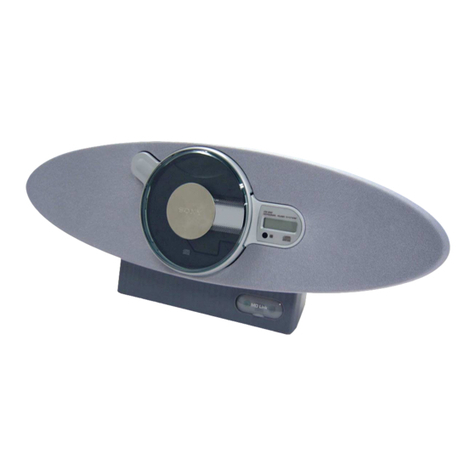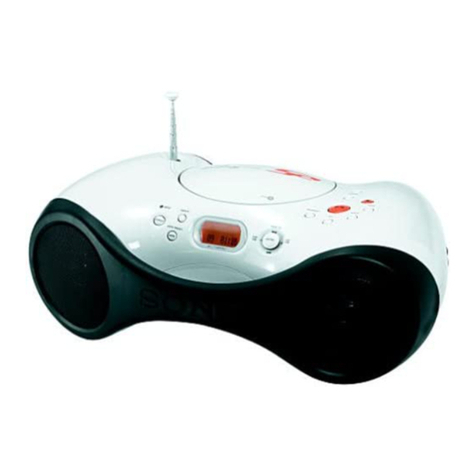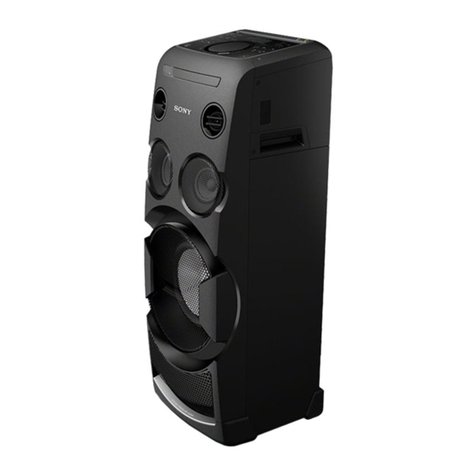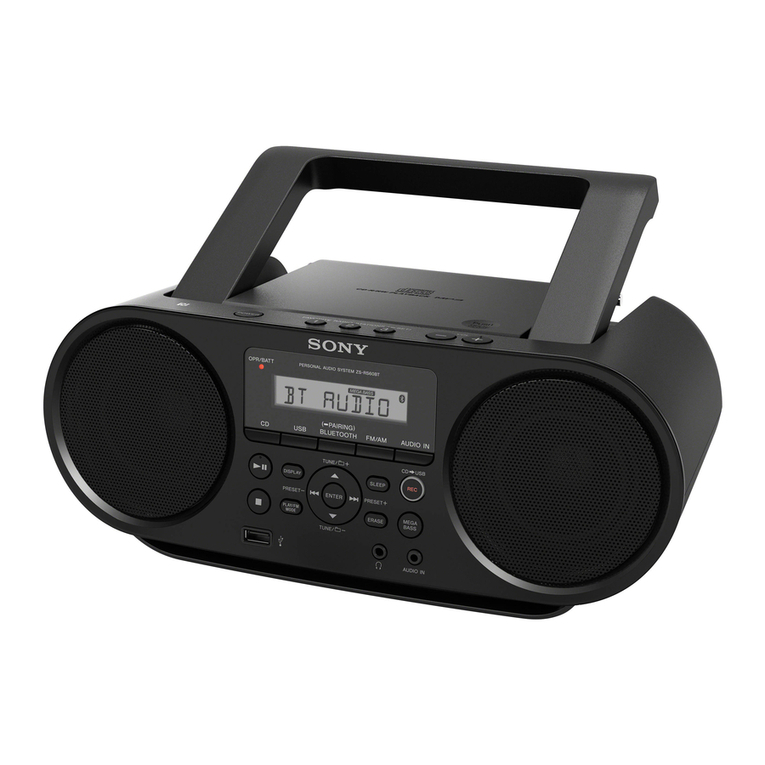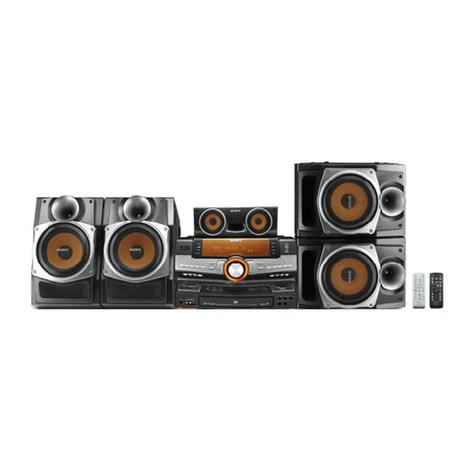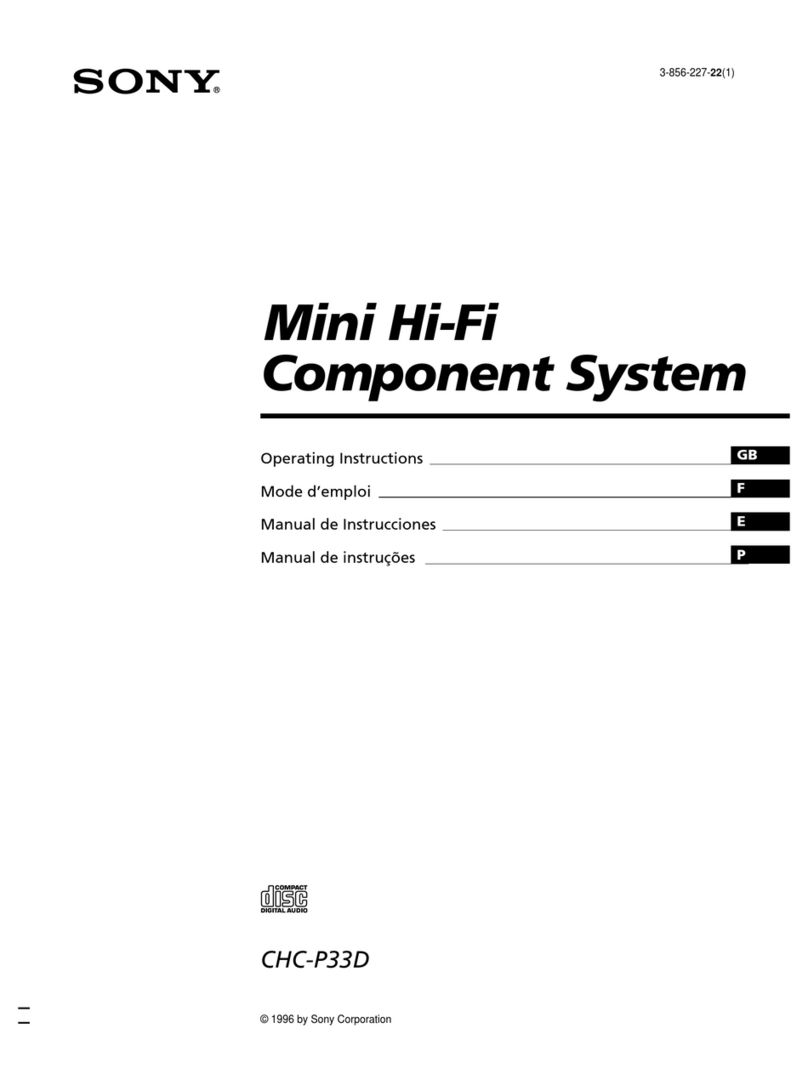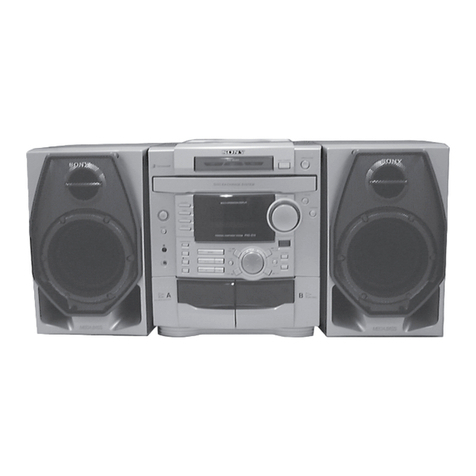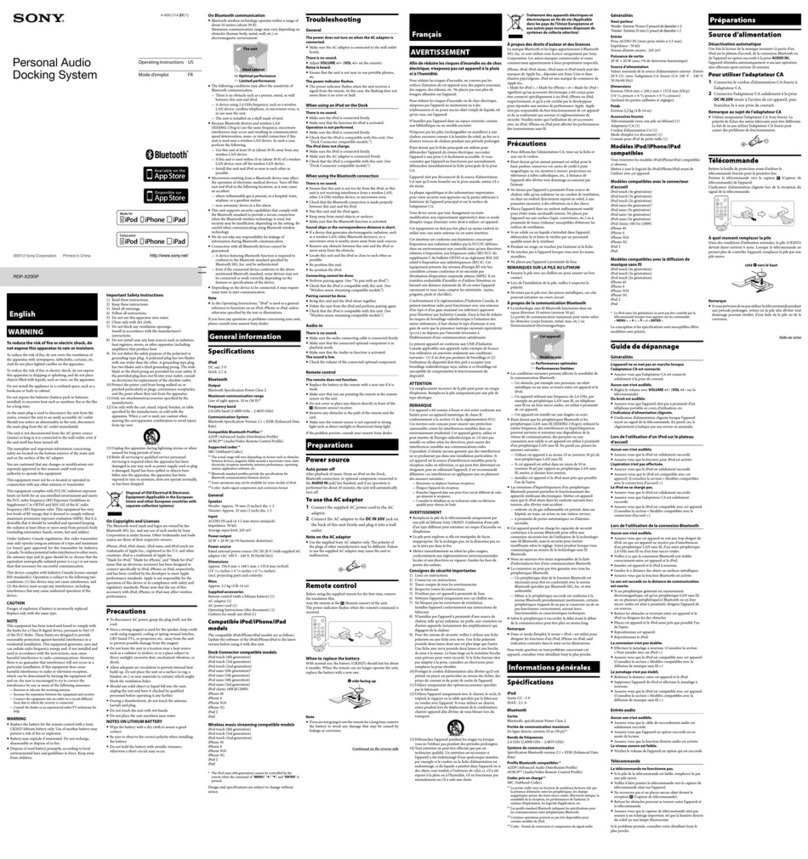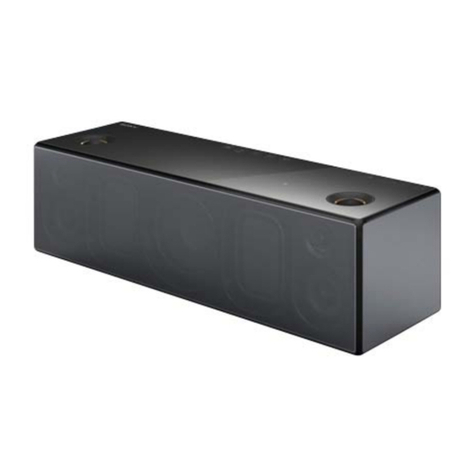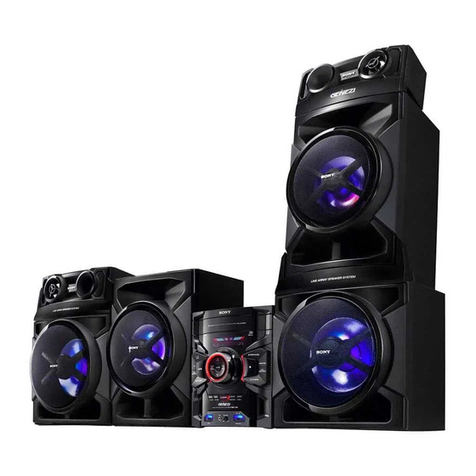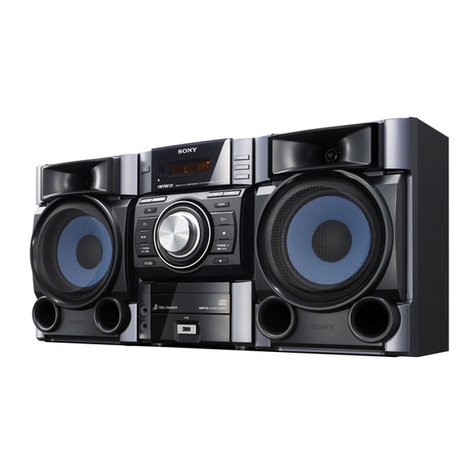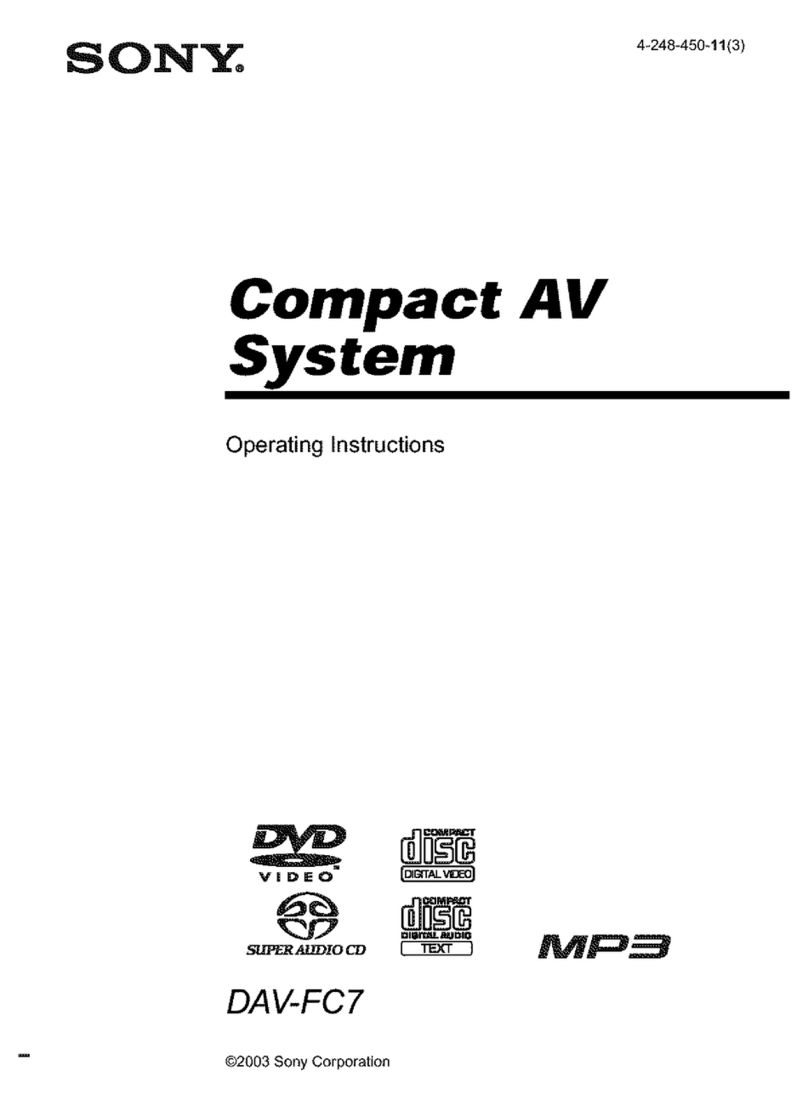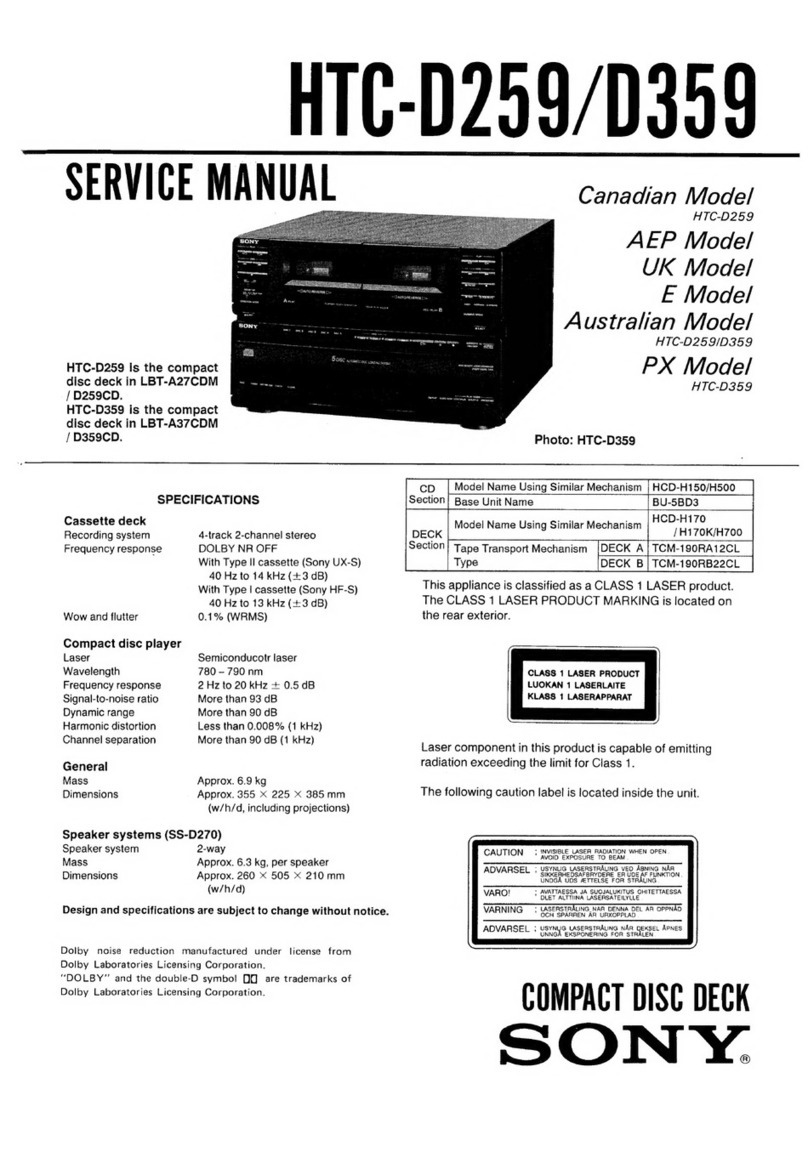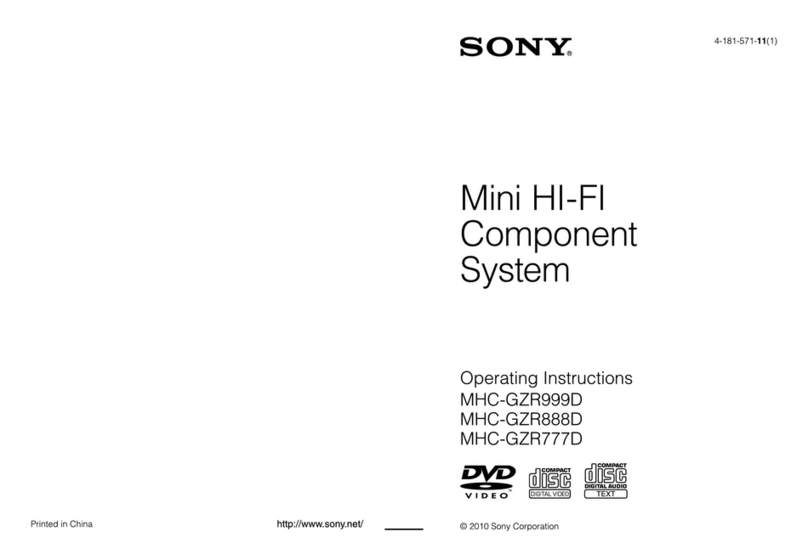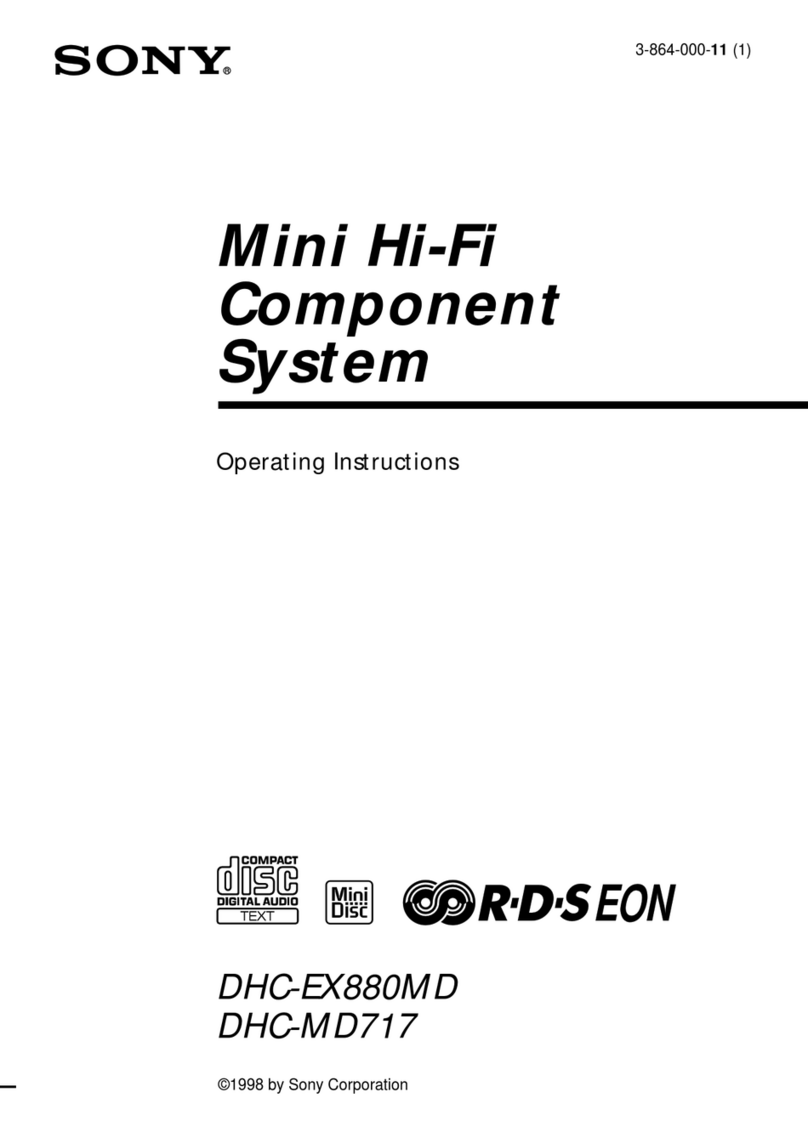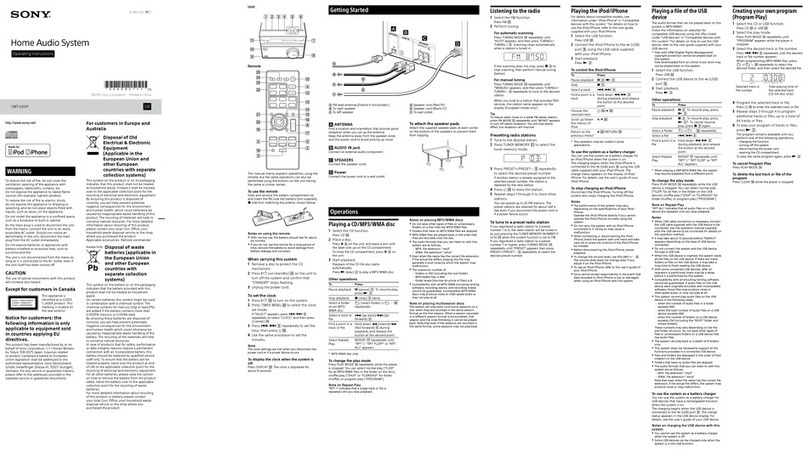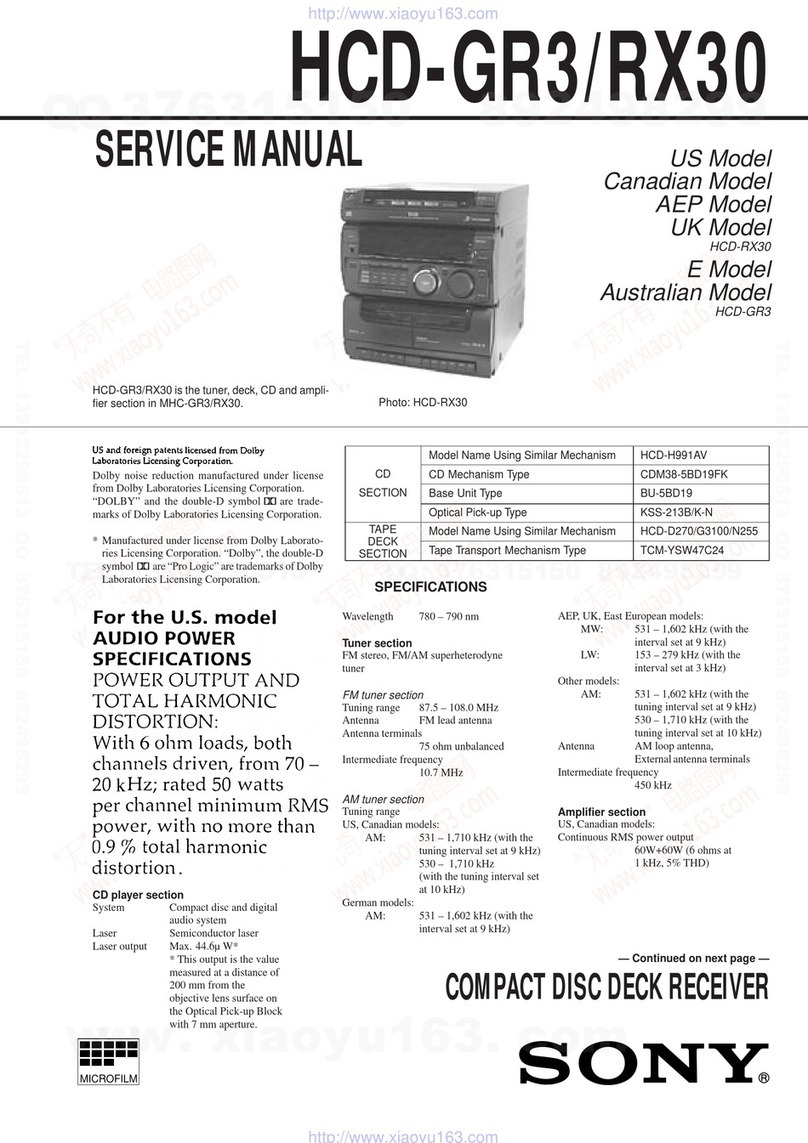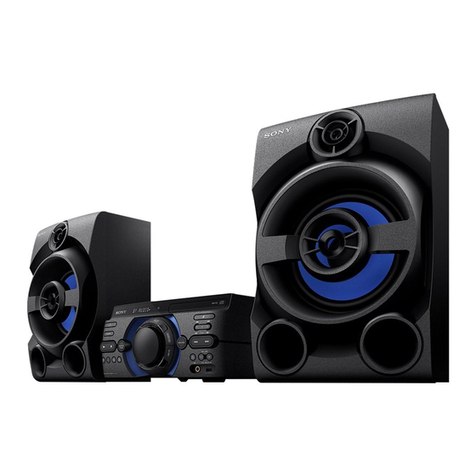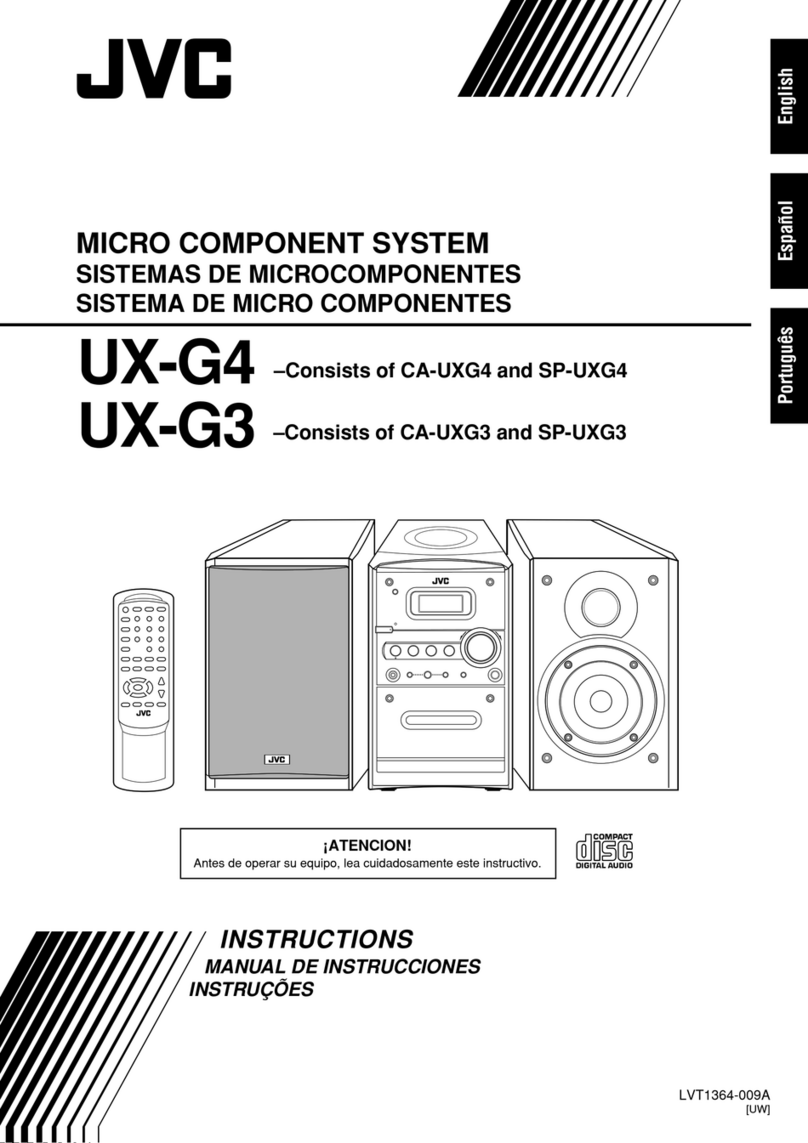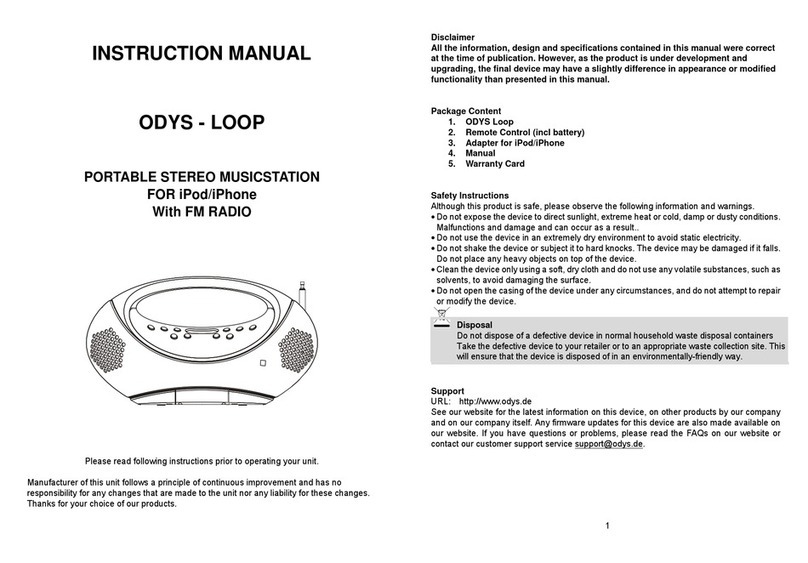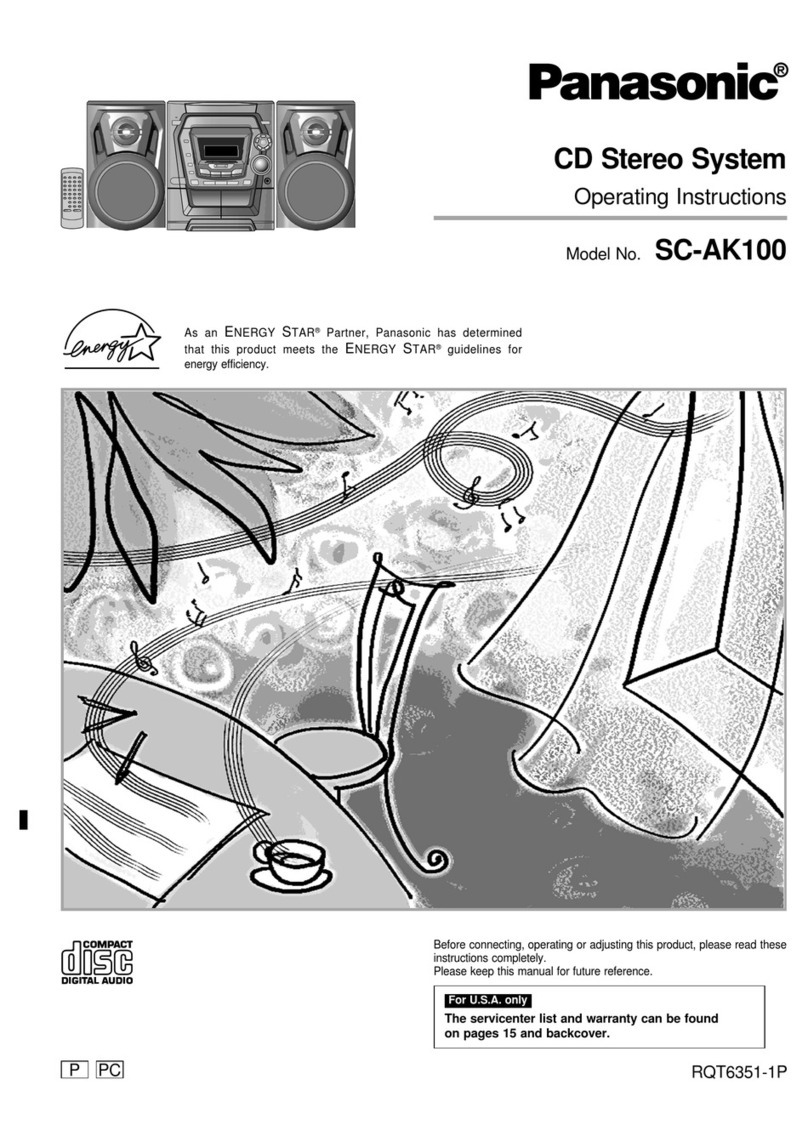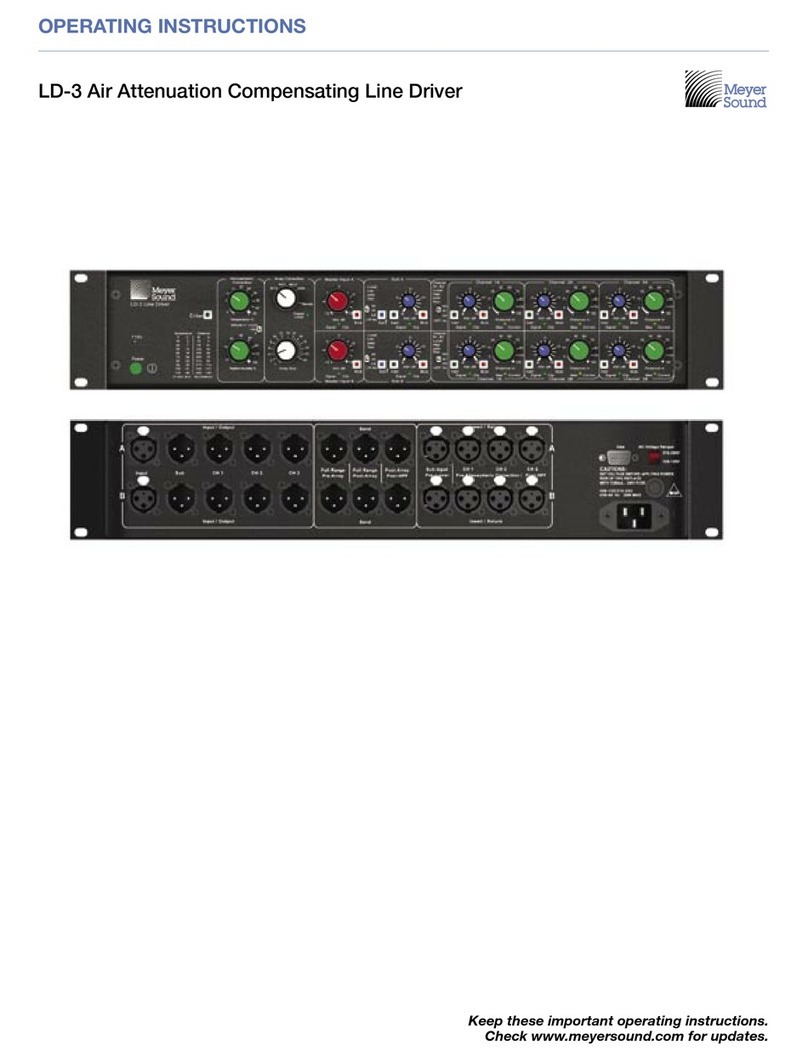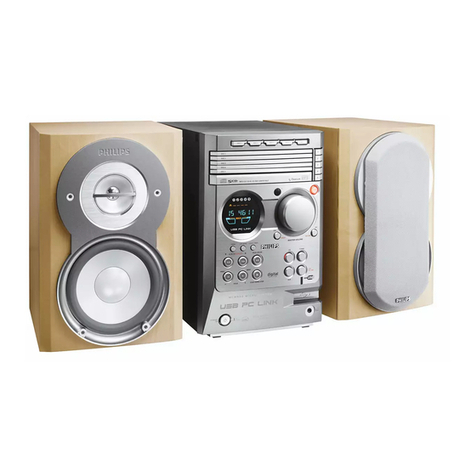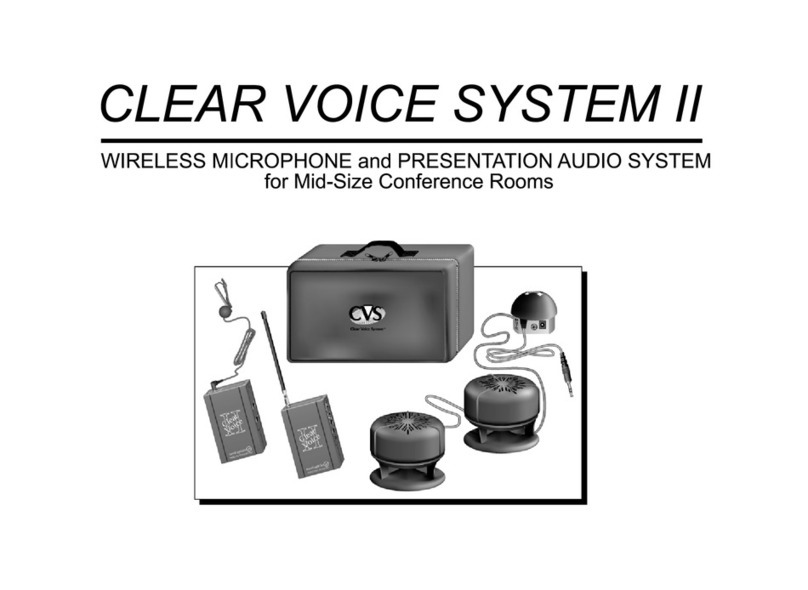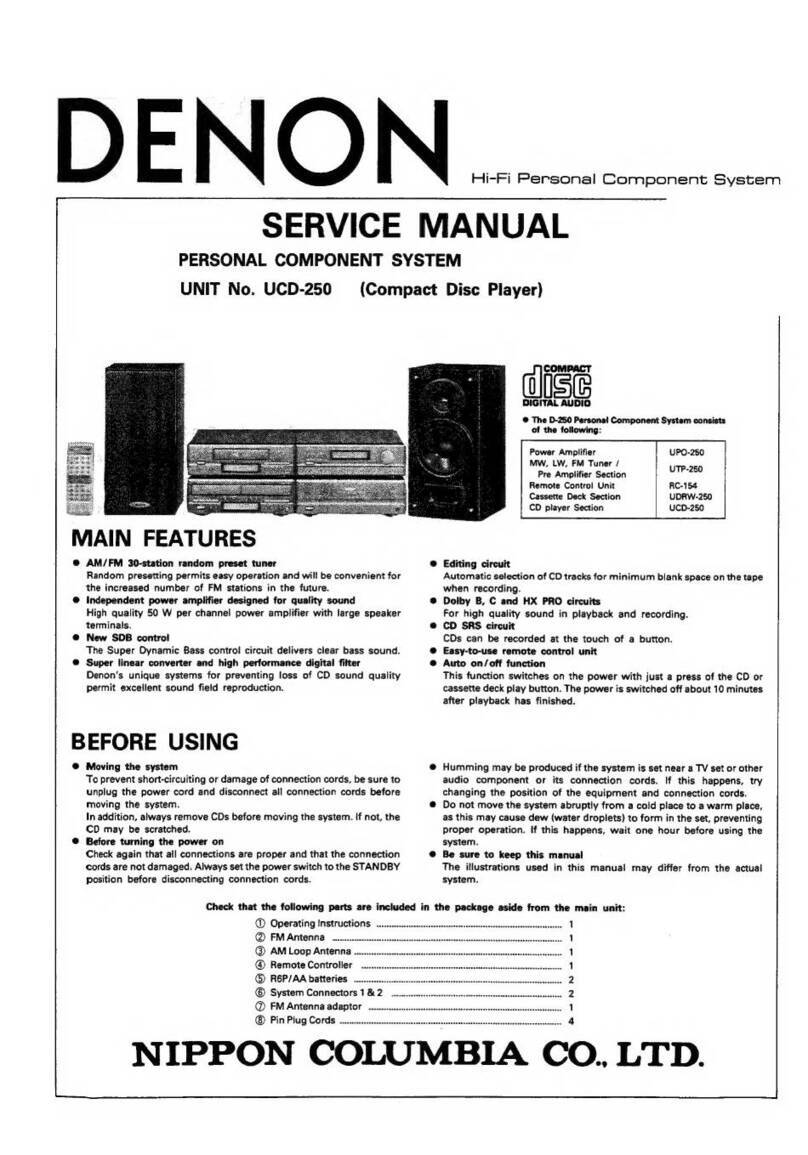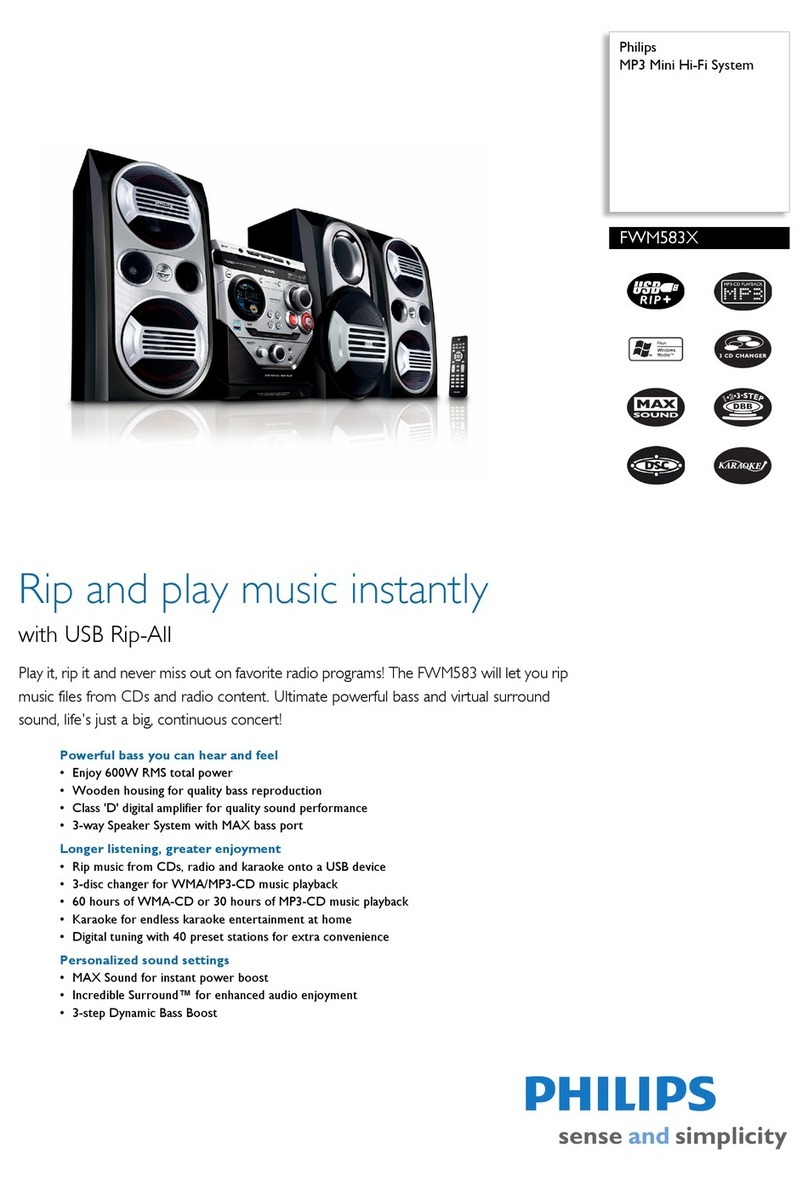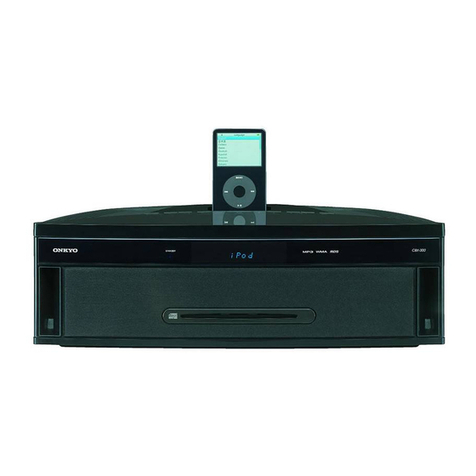5
ZS-XN30
SECTION 2
GENERAL This section is extracted from
instruction manual.
Playing a CD
Connect the supplied AC power adaptor.
1
Press CD (direct power-on).
2
Press ZPUSH down to open the CD
compartment and place the CD on
the CD compartment.
Note
When opening/closing the CD
compartment, place the player on a level
surface and then press ZPUSH down.
3
Close the lid of the CD compartment.
With the label side up
142, 3
Basic Operations
Playing timeTrack number Playing timeFile number
4Press u.
The player plays all the tracks once.
*When playing an MP3 CD, MP3
appears in the display.
Display
Audio CD
5-way control key
u
POWER
VOL +, —
x
Use these buttons for additional operations
To Do this
adjust the volume Press VOL +*1, —.
stop playback Press x.
pause playback Press u*1.
Press the button again to resume play after
pause.
go to the next track Push the 5-way control key toward >.
go back to the Push the 5-way control key toward ..
previous track
*1The button has a tactile dot.
Tip
Playback starts from the
point you last stopped
playing (Resume play).
During stop, the point to be
played is displayed.
To cancel the resume play
to start play from the
beginning of the first track,
press xin stop mode.
Group name
File name
ATRAC CD/MP3 CD*
ZPUSH
Note
Before playing an ATRAC
CD/MP3 CD, this player
reads all file and group
information on the CD.
Depending on the file
structure, it may take more
than a minute to read them.
During this time, Reading
is displayed.
To Do this
select a group*
2
Push the 5-way control key toward + to
go forward and — to go backward.
select a file*
2
Push the 5-way control key toward >to
go forward and .to go backward.
remove the CD Press ZPUSH*
3
.
turn on/off the player Press POWER.
*
2
You can operate during play of ATRAC CDs/MP3 CDs.
*
3
Once you open the CD compartment, the track to start play will
change to the beginning of the first track.
About ESP (Electronic Shock Protection)
function
When a CD is playing, the ESP function is always
activated. The ESP function prevents the sound from
skipping by using a buffer memory that stores music data
for about 10 seconds.
The structure of ATRAC CDs/MP3 CDs
ATRAC CDs/MP3 CDs consist of files and groups. A
file is equivalent to a track of an audio CD. A group
is a bundle of files and is equivalent to an album.
For MP3 CDs, this CD player recognizes an MP3 folder as
a group so that ATRAC CDs and MP3 CDs can be
operated in the same way.
Notes
¥ If ATRAC3plus/ATRAC3
files and MP3 files are
recorded on the same CD,
this CD player plays the
ATRAC3plus/ATRAC3
only.
¥The playback capability of
this CD player may vary
depending on the quality of
the disc and the condition of
the recording device.
¥Acceptable characters on
this CD player are as
follows:
—Ato Z
—ato z
—0to 9
—!" # $ % & ’ ( ) * + , - . / :
; < = > ? @ [ \ ] ^ _ ‘ { | }
~
If you use other characters
on you computer by using
an software such as
SonicStage, they are
displayed as — on this CD
player.
¥On a disc that has
ATRAC3plus/ATRAC3/
MP3 files, do not save files
in other formats and do not
make unneccessary groups.
ATRAC CD
Playing order of ATRAC CDs and MP3 CDs
For ATRAC CDs, files are played in the order selected in
SonicStage.
For MP3 CDs, the playing order may differ depending on
the method used to record MP3 files on the disc. In the
following example, files are played in order of 1to 7.
Notes on ATRAC CDs
¥Maximum number of groups: 255
Maximum number of files: 999
¥CD-Rs/CD-RWs recorded in the ATRAC3plus/ATRAC3 format
cannot be played on your computer.
Notes on MP3 CDs
¥Maximum number of groups: 100
Maximum number of files: 400
Maximum directory level: 8
¥Agroup that does not include an MP3 file is skipped.
¥Be sure to add the file extension mp3 to the file name.
However, if you add the file extension mp3 to a file other than
an MP3 file, the player will not be able to recognize the file
properly.
¥ This player can play bit rates of 16 to 320 kbps, and sampling
frequencies of 32/44.1/ 48 kHz. Variable Bit Rate (VBR) file
can also be played.
¥ To compress a source in an MP3 file, we recommend setting the
compression parameters to 44.1 kHz, 128 kbps, and
Constant Bit Rate.
¥ To record up to the maximum capacity, set the writing software
to halting of writing.
¥To record to the maximum capacity at one time up on media that
has nothing recorded on it, set the writing software to Disc at
Once.
File
Group
MP3 CD
